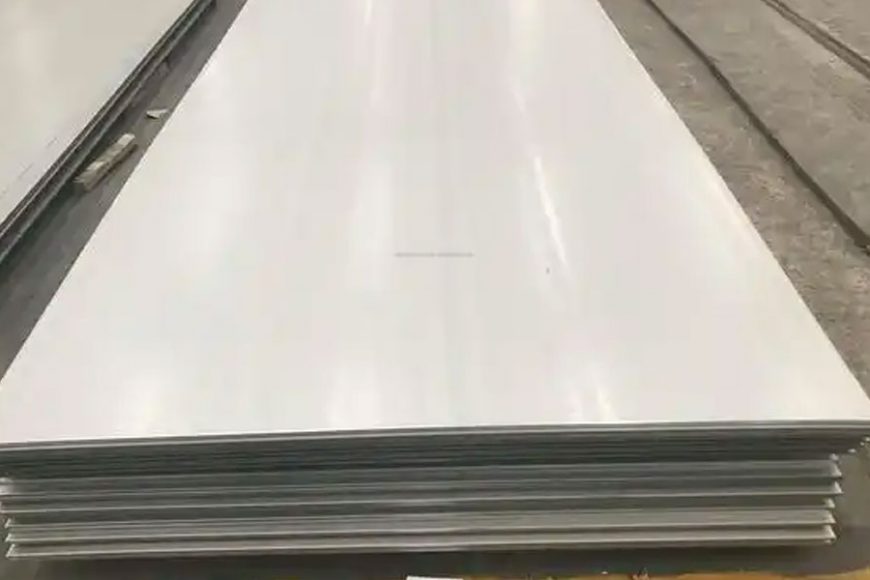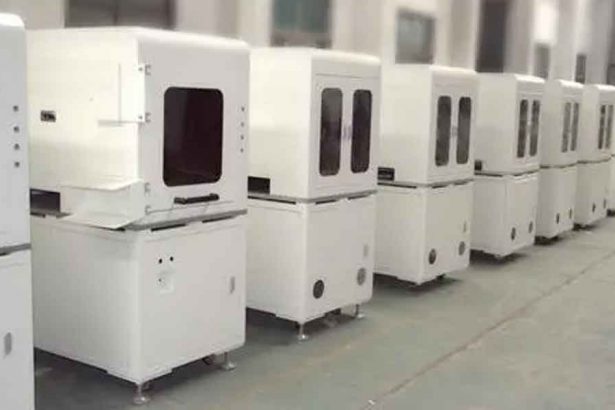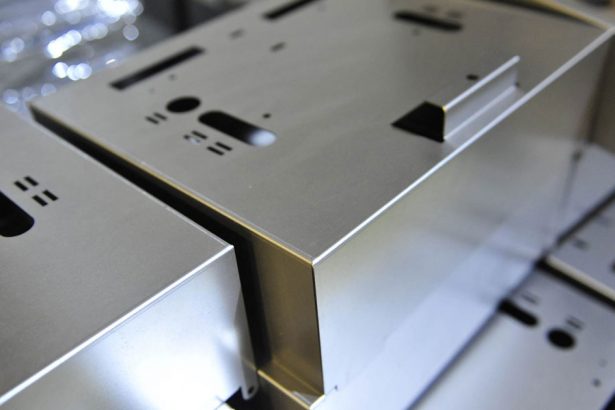Fatigue damage in sheet metal microstructures is a critical phenomenon in materials science and engineering, influencing the durability and reliability of components used in industries such as automotive, aerospace, and construction. The mechanisms governing fatigue damage evolution are complex, involving interactions at the atomic, microstructural, and macroscopic levels. This article provides a comprehensive exploration of the mechanisms driving fatigue damage in sheet metal, focusing on the microstructural aspects, crack initiation, propagation, and eventual failure. It also examines the influence of material properties, processing techniques, and environmental factors, supported by detailed comparative tables.
Introduction to Fatigue Damage in Sheet Metals
Fatigue damage refers to the progressive and localized structural damage that occurs when a material is subjected to cyclic loading. In sheet metals, which are thin, flat pieces of metal formed through rolling or other processes, fatigue damage is particularly significant due to their widespread use in applications requiring high strength-to-weight ratios. Sheet metals, such as steel, aluminum, titanium, and their alloys, exhibit unique microstructural characteristics that influence their fatigue behavior. The evolution of fatigue damage involves several stages: microstructural changes, crack initiation, crack propagation, and final fracture. Each stage is governed by distinct mechanisms influenced by the material’s composition, microstructure, and external loading conditions.
Fatigue damage in sheet metals is a multiscale phenomenon. At the atomic level, cyclic loading induces dislocation motion and accumulation. At the microstructural level, these dislocations interact with grain boundaries, inclusions, and other defects, leading to localized stress concentrations. At the macroscopic level, these localized effects manifest as cracks that grow over time, ultimately causing failure. Understanding these mechanisms is essential for designing durable materials and predicting component lifespans.
Microstructural Characteristics of Sheet Metals
Sheet metals are typically polycrystalline materials, meaning they consist of numerous crystalline grains with varying orientations. The microstructure of sheet metals is shaped by their composition and processing history, including rolling, annealing, and heat treatment. Key microstructural features influencing fatigue behavior include:
- Grain Size and Shape: Smaller grains generally enhance strength and fatigue resistance due to increased grain boundary density, which impedes dislocation motion. However, excessively fine grains may promote crack initiation under certain conditions.
- Phase Composition: Many sheet metals, such as dual-phase steels, contain multiple phases (e.g., ferrite and martensite). Phase boundaries can act as barriers to crack propagation but may also serve as sites for crack initiation.
- Inclusions and Precipitates: Non-metallic inclusions and second-phase particles can act as stress concentrators, initiating fatigue cracks. Their size, distribution, and cohesion with the matrix are critical.
- Texture: Rolling processes impart crystallographic texture, aligning grains in specific orientations. Texture influences anisotropic fatigue behavior, with certain orientations being more prone to crack initiation.
- Residual Stresses: Manufacturing processes introduce residual stresses, which can either enhance or degrade fatigue performance depending on their nature (compressive or tensile).
The table below summarizes the impact of microstructural features on fatigue behavior:
| Feature | Description | Effect on Fatigue |
|---|---|---|
| Grain Size | Size of crystalline grains, typically 1–100 µm in sheet metals. | Smaller grains improve fatigue resistance; larger grains may reduce crack initiation. |
| Phase Composition | Presence of multiple phases (e.g., ferrite, martensite). | Phase boundaries impede crack growth but may initiate cracks. |
| Inclusions/Precipitates | Non-metallic particles or second-phase particles. | Act as stress concentrators, promoting crack initiation. |
| Texture | Preferred crystallographic orientation due to processing. | Influences anisotropic fatigue behavior; certain textures increase crack susceptibility. |
| Residual Stresses | Internal stresses from manufacturing processes. | Compressive stresses enhance fatigue life; tensile stresses reduce it. |
Mechanisms of Fatigue Damage Evolution
The evolution of fatigue damage in sheet metal microstructures can be divided into distinct stages, each characterized by specific mechanisms. These stages are explored in detail below.
Stage 1: Microstructural Changes and Dislocation Dynamics
The earliest stage of fatigue damage involves microstructural changes driven by cyclic loading. When a sheet metal is subjected to cyclic stress, dislocations—line defects in the crystal lattice—begin to move. This motion is governed by the applied stress and the material’s yield strength. Repeated loading causes dislocations to accumulate, forming persistent slip bands (PSBs), which are localized regions of intense plastic deformation.
PSBs are critical to fatigue damage because they create surface extrusions and intrusions—small steps on the material’s surface. These surface features act as stress concentrators, setting the stage for crack initiation. The formation of PSBs is influenced by:
- Stress Amplitude: Higher stress amplitudes accelerate dislocation accumulation and PSB formation.
- Grain Orientation: Grains oriented favorably for slip (e.g., with slip planes aligned with the loading direction) are more likely to form PSBs.
- Temperature: Elevated temperatures enhance dislocation mobility, potentially accelerating PSB formation.
In aluminum alloys, for example, PSBs form along {111} slip planes, while in steels, they are influenced by the body-centered cubic (BCC) lattice structure. The density and distribution of PSBs depend on the number of loading cycles and the material’s stacking fault energy.
Stage 2: Crack Initiation
Crack initiation is the process by which microscopic cracks form, typically at the surface or near-surface regions of the sheet metal. In sheet metals, cracks often initiate at:
- Surface Intrusions/Extrusions: PSBs create surface irregularities that concentrate stress, leading to crack formation.
- Inclusions: Non-metallic inclusions, such as oxides or sulfides, create stress concentrations due to their mismatch with the metal matrix.
- Grain Boundaries: High-angle grain boundaries, especially in coarse-grained materials, can initiate cracks due to incompatible deformation between adjacent grains.
- Phase Boundaries: In multi-phase materials, stress concentrations at phase interfaces can trigger crack initiation.
The likelihood of crack initiation depends on the stress intensity, surface condition, and microstructure. For instance, polished surfaces reduce the likelihood of crack initiation by minimizing surface defects, while rough surfaces exacerbate it. The table below compares crack initiation sites in common sheet metals:
| Material | Primary Crack Initiation Sites | Influencing Factors |
|---|---|---|
| Aluminum Alloys | Surface intrusions, inclusions, coarse precipitates | Surface finish, precipitate size, stress amplitude |
| Steels | Grain boundaries, inclusions, phase boundaries | Grain size, phase composition, residual stresses |
| Titanium Alloys | Surface defects, alpha-beta phase interfaces | Texture, surface roughness, loading direction |
| Magnesium Alloys | Twin boundaries, inclusions | Twinning behavior, inclusion distribution |
Crack initiation is a stochastic process, meaning that the exact location and timing of crack formation vary even under identical loading conditions. Statistical models, such as the Weibull distribution, are often used to predict crack initiation probabilities.
Stage 3: Crack Propagation
Once initiated, microcracks grow under continued cyclic loading, transitioning from microscopic to macroscopic scales. Crack propagation in sheet metals can be divided into two regimes:
- Stage I (Short Crack Growth): In this regime, cracks grow along crystallographic planes, typically within a single grain. The crack path is highly sensitive to the local microstructure, such as grain orientation and phase boundaries. Short cracks exhibit irregular growth rates due to interactions with microstructural barriers.
- Stage II (Long Crack Growth): As cracks extend beyond several grain diameters, they propagate perpendicular to the maximum tensile stress, following a more predictable path. This stage is governed by linear elastic fracture mechanics (LEFM), with the crack growth rate described by the Paris Law:
[ \frac{da}{dN} = C (\Delta K)^m ]
where ( \frac{da}{dN} ) is the crack growth rate per cycle, ( \Delta K ) is the stress intensity factor range, and ( C ) and ( m ) are material constants.
The transition from Stage I to Stage II depends on the microstructure and loading conditions. Fine-grained materials tend to prolong Stage I due to frequent crack deflection at grain boundaries, while coarse-grained materials transition more quickly to Stage II.
The table below compares crack propagation characteristics in different sheet metals:
| Material | Stage I Characteristics | Stage II Characteristics | Key Influencing Factors |
|---|---|---|---|
| Aluminum Alloys | Crystallographic growth, sensitive to grain orientation | Stable growth, Paris Law applicable | Grain size, texture, precipitate distribution |
| Steels | Influenced by phase boundaries, slower in fine grains | Predictable growth, high ( m ) in Paris Law | Phase composition, inclusion content |
| Titanium Alloys | Growth along alpha grains, texture-dependent | Moderate growth rate, sensitive to stress intensity | Alpha-beta phase ratio, texture |
| Magnesium Alloys | Influenced by twinning, irregular growth | Rapid growth due to low fracture toughness | Twinning, grain size |
Stage 4: Final Fracture
The final stage of fatigue damage is fracture, where the crack reaches a critical size, leading to catastrophic failure. The critical crack size depends on the material’s fracture toughness (( K_c )) and the applied stress. In sheet metals, final fracture is often brittle in high-strength alloys and ductile in softer materials like aluminum.
Ductile fracture is characterized by dimple formation and void coalescence, while brittle fracture involves cleavage or intergranular cracking. The mode of fracture is influenced by:
- Microstructure: Fine-grained materials tend to exhibit ductile fracture, while coarse-grained or embrittled materials are prone to brittle fracture.
- Temperature: Low temperatures promote brittle fracture by reducing ductility.
- Loading Rate: High loading rates can shift the fracture mode toward brittle behavior.
The table below summarizes fracture characteristics in sheet metals:
| Material | Fracture Mode | Key Features | Influencing Factors |
|---|---|---|---|
| Aluminum Alloys | Ductile, dimple formation | Extensive plastic deformation, void coalescence | Grain size, precipitate distribution |
| Steels | Mixed (ductile/brittle) | Dimples in low-carbon steels, cleavage in high-strength steels | Carbon content, heat treatment |
| Titanium Alloys | Ductile or cleavage | Alpha-beta phase interactions, texture-dependent | Phase ratio, temperature |
| Magnesium Alloys | Brittle, intergranular | Limited ductility, twin-induced cracking | Twinning, grain size |
Influence of Material Processing on Fatigue Behavior
The fatigue behavior of sheet metals is strongly influenced by their processing history. Common processing techniques include rolling, annealing, and surface treatments, each affecting the microstructure and fatigue performance.
Rolling
Rolling reduces sheet thickness and imparts a textured microstructure. Cold rolling increases dislocation density and residual stresses, enhancing strength but potentially reducing fatigue life due to tensile residual stresses. Hot rolling, conversely, produces larger grains and lower residual stresses, improving fatigue resistance.
Annealing
Annealing relieves residual stresses and promotes recrystallization, resulting in equiaxed grains. The degree of annealing (partial or full) influences grain size and fatigue behavior. Over-annealing can lead to coarse grains, reducing fatigue resistance.
Surface Treatments
Surface treatments, such as shot peening, laser peening, and polishing, modify the surface condition and residual stress state. Shot peening introduces compressive residual stresses, significantly enhancing fatigue life by delaying crack initiation. Polishing reduces surface roughness, minimizing stress concentrations.
The table below compares the effects of processing techniques on fatigue performance:
| Processing Technique | Microstructural Effect | Impact on Fatigue Life |
|---|---|---|
| Cold Rolling | High dislocation density, tensile residual stresses | May reduce fatigue life due to stress concentrations |
| Hot Rolling | Larger grains, lower residual stresses | Improves fatigue life |
| Annealing | Equiaxed grains, reduced residual stresses | Enhances fatigue life; coarse grains may reduce it |
| Shot Peening | Compressive residual stresses, surface hardening | Significantly improves fatigue life |
| Polishing | Reduced surface roughness | Improves fatigue life by minimizing crack initiation |
Environmental Effects on Fatigue Damage
Environmental factors, such as temperature, humidity, and corrosive media, significantly influence fatigue damage in sheet metals.
Temperature
Elevated temperatures accelerate dislocation mobility and creep, reducing fatigue life. Low temperatures embrittle materials, increasing the likelihood of brittle fracture. For example, aluminum alloys exhibit reduced fatigue life above 150°C, while titanium alloys maintain performance up to 400°C.
Corrosion Fatigue
Corrosive environments, such as saltwater or acidic solutions, exacerbate fatigue damage through corrosion fatigue. Corrosion pits act as stress concentrators, accelerating crack initiation. Stainless steels and titanium alloys exhibit better corrosion fatigue resistance than aluminum or magnesium alloys.
Humidity
High humidity promotes stress corrosion cracking and hydrogen embrittlement, particularly in steels and magnesium alloys. Protective coatings or alloying with corrosion-resistant elements (e.g., chromium in stainless steel) mitigate these effects.
The table below summarizes environmental effects on fatigue performance:
| Environmental Factor | Effect on Fatigue | Mitigation Strategies |
|---|---|---|
| High Temperature | Accelerates creep, reduces fatigue life | Use high-temperature alloys, thermal barriers |
| Corrosion | Pits act as crack initiation sites | Apply coatings, use corrosion-resistant alloys |
| Humidity | Promotes stress corrosion, hydrogen embrittlement | Use protective coatings, control environment |
Modeling and Simulation of Fatigue Damage
Modeling fatigue damage in sheet metals is essential for predicting component lifespans and optimizing material design. Common approaches include:
- Empirical Models: The S-N curve (stress vs. number of cycles) and Basquin’s equation describe fatigue life under constant amplitude loading.
- Fracture Mechanics: LEFM and the Paris Law model crack propagation, while elastic-plastic fracture mechanics (EPFM) accounts for plastic deformation.
- Crystal Plasticity: Crystal plasticity finite element models simulate dislocation motion and PSB formation at the microstructural level.
- Multiscale Modeling: Combines atomistic, microstructural, and continuum models to capture fatigue damage across scales.
Recent advances in machine learning have enabled data-driven fatigue models, predicting crack initiation and propagation based on microstructural data and loading conditions.
Case Studies in Sheet Metal Fatigue
Automotive Sheet Steels
In automotive applications, high-strength low-alloy (HSLA) steels are widely used for body panels. Fatigue damage in HSLA steels is influenced by inclusions and phase boundaries. Shot peening and zinc coatings enhance fatigue life by introducing compressive stresses and corrosion resistance.
Aerospace Aluminum Alloys
Aluminum alloys, such as 2024-T3, are critical in aerospace structures. Fatigue cracks often initiate at surface inclusions or scratches. Laser peening and anodizing improve fatigue performance by introducing compressive stresses and corrosion resistance.
Titanium Alloys in Medical Devices
Titanium alloys, such as Ti-6Al-4V, are used in medical implants due to their biocompatibility and fatigue resistance. Fatigue cracks initiate at alpha-beta phase interfaces, but fine-grained microstructures and polishing enhance performance.
Future Directions in Fatigue Research
Advances in materials science and computational modeling are driving new approaches to mitigate fatigue damage in sheet metals. Key areas of research include:
- Nanostructured Materials: Nanocrystalline sheet metals exhibit superior fatigue resistance due to high grain boundary density.
- Additive Manufacturing: 3D-printed sheet metals introduce unique microstructures, requiring new fatigue models.
- Smart Materials: Self-healing alloys and composites could mitigate fatigue damage through crack repair mechanisms.
- Digital Twins: Real-time fatigue monitoring using digital twins enables predictive maintenance and extended component lifespans.
Conclusion
The evolution of fatigue damage in sheet metal microstructures is a complex, multiscale process involving dislocation dynamics, crack initiation, propagation, and fracture. Microstructural features, processing techniques, and environmental factors play critical roles in determining fatigue performance. Through advanced modeling, surface treatments, and material design, engineers can enhance the fatigue resistance of sheet metals, ensuring the reliability of critical components in diverse applications. Continued research into nanostructured materials, additive manufacturing, and smart materials promises to further improve fatigue performance, addressing the challenges of modern engineering.




